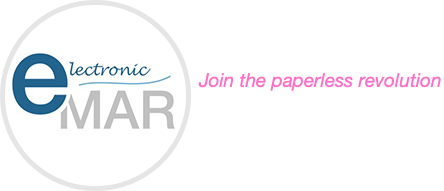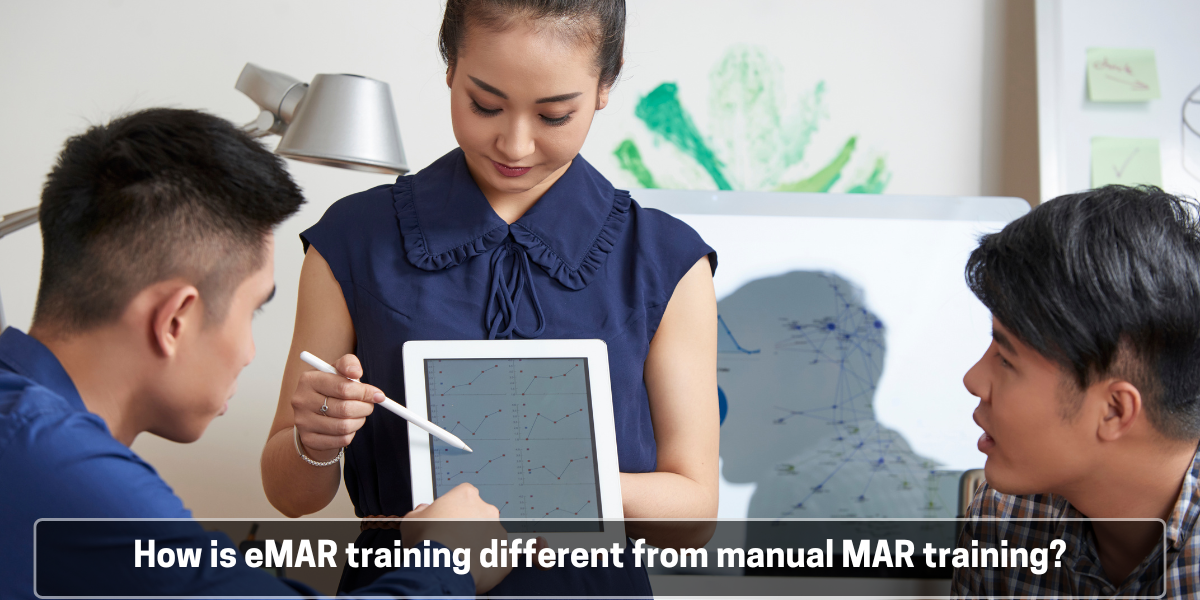The way care home staff record, administer, and track medication has a direct impact on resident safety, regulatory compliance, and day-to-day efficiency. Medication errors can cause serious consequences, not only for residents’ health but also for the home’s reputation and legal standing. Accurate and timely documentation remains essential in the delivery of safe care and in meeting the standards set by regulatory bodies such as the Care Quality Commission (CQC).
As digital systems gain wider use across the UK care sector, the tools and processes involved in medication management have undergone significant changes. Electronic Medication Administration Records (eMAR) provide a more structured, automated approach compared to traditional paper-based Medication Administration Records (MAR). With this shift, the nature of training required to support digital systems has changed. Staff now need clear instruction in how to use software, follow digital prompts, and respond to alerts, all while upholding the core principles of safe medication administration. Here, we outline how eMAR training contrasts with manual MAR training:
Overview of Manual MAR Training
Manual MAR systems rely on handwritten entries in paper charts. Training for this method concentrates on developing staff’s understanding of how to interpret, complete, and maintain physical records. Trainers cover the following areas:
- Identifying prescription details on labels and correlating them with MAR entries
- Writing accurate and legible entries
- Marking doses correctly
- Recognising missed doses or resident refusals
- Recording omissions clearly and following internal protocols
- Storing records securely to ensure confidentiality and regulatory compliance
Most training takes place through in-person demonstrations, mentoring by senior staff, and written materials. Assessment usually involves observation during medication rounds, followed by feedback and supervision.
Overview of eMAR Chart Training
For eMAR systems, staff use tablets or desktop computers to review and update resident medication information. Training for eMAR includes the following elements:
- Learning how to access the eMAR system securely
- Understanding the user interface and the resident profiles
- Administering medication with on-screen prompts
- Confirming doses via barcode scanners or digital checklists
- Addressing alerts generated by the system for missed doses or contraindications
- Producing audit reports and reviewing administration history
Training providers often deliver this content through structured courses, which may include e-learning modules, classroom sessions, video tutorials, and support from system vendors.
Differences in Training Delivery
Manual MAR training often depends on internal resources. Senior carers or nurses guide new staff through procedures based on the care home’s protocols. While some homes use formal training packages, the process remains largely informal and varies between organisations.
eMAR training involves a more formalised approach. Most eMAR providers offer structured onboarding programmes. These may include live demonstrations, access to help desks, and ongoing support. Care home managers must ensure new staff receive system credentials and complete the necessary courses before undertaking medication rounds.
Accuracy and Error Reduction
Manual MAR training focuses on the importance of legible handwriting, correct transcription, and careful checking of drug names, times, and dosages. Staff must rely on memory and vigilance to avoid errors, which makes the training heavily dependent on individual attention to detail. Auditing procedures require additional guidance, as staff must learn how to review and verify records manually.
eMAR training takes a different approach. Staff receive instruction on how to use system features that support accuracy—such as prompts, alerts, and barcode scanning. Training covers how to recognise and act on system warnings for missed doses, duplicate entries, or allergy risks. This structured approach reduces reliance on memory and supports safer medication administration through clearly defined protocols.
Standardisation Across Multiple Sites
For organisations that manage multiple care homes, manual MAR training often results in variation across locations. Each home may follow slightly different documentation styles, protocols, and training approaches depending on the preferences and experience of senior staff. As a result, staff who transfer between sites may face unfamiliar processes, which can create confusion and increase the risk of errors.
eMAR training addresses this by offering a centralised, uniform framework. Most eMAR providers deliver the same structured training content to all homes within an organisation. This includes consistent use of training portals, walkthroughs, user documentation, and testing modules. As a result, all staff—regardless of location—receive the same information, follow the same digital workflows, and operate within the same interface. This standardisation simplifies onboarding, especially for larger organisations or agency workers who move between homes. It also ensures that quality assurance teams can monitor compliance more easily across sites.
Speed of Training Completion
Manual MAR training often takes place informally over an extended period, typically spread across several shifts. New staff usually learn by observing colleagues during live medication rounds, asking questions as situations arise, and gradually taking on responsibilities. This method can prove time-consuming and inconsistent.
In contrast, eMAR training typically follows a defined and structured timeline. Staff are required to complete system training modules before receiving access to the digital platform. This ensures that all users begin with a clear foundation of knowledge and system familiarity.
eMAR training offers a clear, structured way to teach staff how to use the system safely and correctly. It helps them feel confident, reduces mistakes, and makes the move from paper to digital much smoother. This supports better care and keeps care homes in line with regulations.







